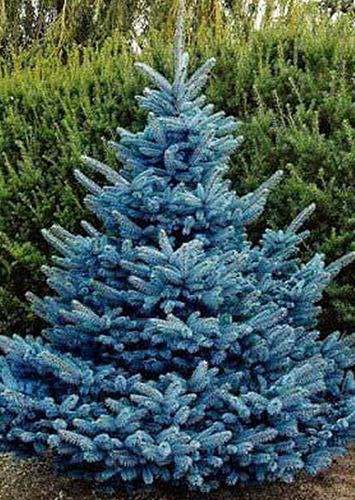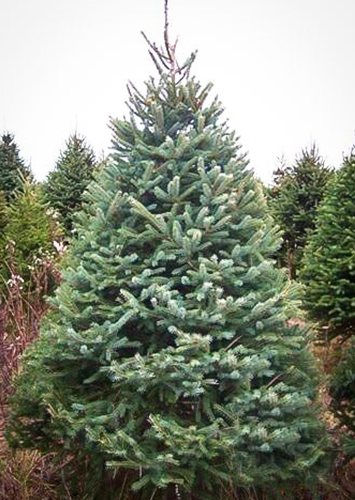Native Colorado Christmas Trees
How many times has your family watched Charlie Brown’s Christmas Special? Most likely, the answer is a lot, which means your Christmas tree selection narrows quickly to “We want a Charlie Brown Christmas tree.” Fortunately, an across-the-street neighbor in Washington Park was one of the Malik brothers who ran Bonzi Nursery, specializing in Christmas trees native to Colorado. Native, fresh-cut Christmas trees include Concolor Fir, Douglas Fir, Scotch Pine, White Pine, Lodgepole Pine, and Spruces.
Fun Facts:
- Fresh-cut Christmas trees are a renewable resource.
- It takes trees about 7 to 15 years to grow to 6 feet tall, depending on growing conditions.
- A consumer must put up an artificial tree for 20 years before its carbon footprint is less than a real tree.
- America has about 15,000 Christmas tree growers in North America, who employ over 100,000 people.
- There are about 1 million acres in production for growing Christmas trees, with each acre supplying the daily oxygen requirements of 18 people.
Fir Trees
Fir trees are the traditional Christmas tree for Coloradans because they have the most sought-after qualities: great fragrance, sturdy needles and branches, and good needle retention. If you keep the trees watered, the Firs will keep their needles through Christmas to the New Year.
Douglas Fir

These trees are known for their aromas and shape. The blue to dark green color trees are spindly and showcase Christmas ornaments well. Depending on tree selection, a Douglas Fir is a compromise between the parents wanting a traditional tree shape and a Charlie Brown look.
Concolor Fir

The Concolor Fir, also known as the White Fir, has blue-green needles. Its light-colored new growth gives this tree a cheerful appearance. This tree does not pass the Charlie Brown tree test because of its almost perfect pyramidal shape and thick body. However, these Firs have good foliage color, needle retention, and a pleasing aroma.
Pine Trees
Pine trees look and smell good. They are easily pruned to a good shape in the field and boast good needle retention. However, pines produce much sap and can create a mess.
Scotch Pine

These pines are popular Christmas trees with stiff branches and bright green needles that hold for weeks. Their needles stay on the tree, even when dried out. They have a pleasant, lasting aroma. However, their thick foliage does not make it a good Charlie Brown Christmas Tree.
Southwestern White Pine

These are the trees seen while driving on mountain roads, and the driver wonders why in the world the tree is growing there. They are known for taking root on cliffs, steep ridges, and other seemingly treacherous places. Their bark does start light grey but turns darker as the tree matures. White Pines do pass the Charlie Brown Christmas tree test.
Lodgepole Pine

Lodgepoles are ubiquitous in Colorado, covering approximately seven percent of the state’s forested lands. These trees make great Charlie Brown Christmas trees because of their spindly look and sparse needles.
Spruce
For shoppers looking for the “perfectly shaped Christmas tree,” Spruces fit the bill. These trees are known for their pyramidal shape and dense foliage, so they do not make good Charlie Brown Christmas trees.
Colorado Blue Spruce

The Blue Spruce is Colorado’s state tree, with stiff needles growing to 1 to 3 inches long. The tree has good needle retention but will drop them in a warm room.
White Spruce

White Spruces are blue-green to green in color, have excellent foliage, and have a natural shape. Needle retention is good, but the needles smell bad when crushed.
Cutting Down Your Own Trees in Denver
For many Coloradans, cutting down their Christmas tree is a time-honored tradition. The U.S. Forest Service allows the cutting of trees in certain parks throughout Colorado with the purchase of a permit. The Front Range Christmas Tree Cutting areas include the Arapaho & Roosevelt National Forests, Pike National Forest, and the White River National Forest. The easiest way to purchase a $20 per tree permit is online at recreation.gov.
Christmas Tree Recycling
The City of Denver offers a Treecycle program that turns discarded Christmas trees into mulch. Free Treecycle mulch is available to Denver residents at the May Mulch Giveaway and Compost Sale. For details about recycling trees in Denver, please click this link.
Winter Tree Care
Besides thinking of Christmas trees, homeowners should know that Denver goes through winter droughts. Your yard trees might need some water to get them through the winter. Please check out our Winter Tree Care Handbook for more information about winter tree care.
Need a deep root watering appointment? Please fill out this tree service request form or call 303 871-9121.

